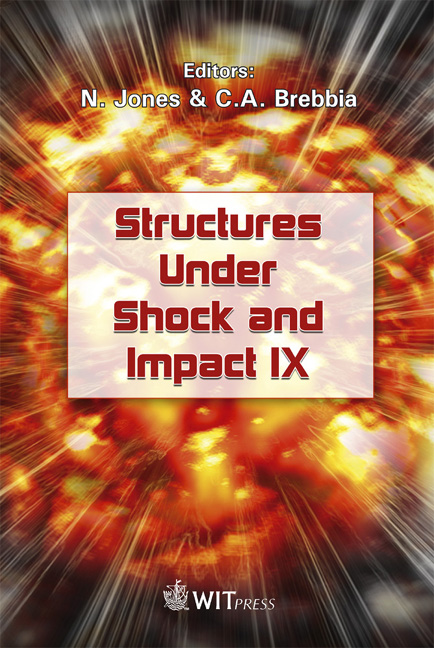Explosive Shock And Laser Exposure Of Metallic And Ceramic Materials
Price
Free (open access)
Transaction
Volume
87
Pages
7
Published
2006
Size
251 kb
Paper DOI
10.2495/SU060151
Copyright
WIT Press
Author(s)
O. T. Inal, P. F. Gerity & D. H. Lopez
Abstract
Explosive shock and Q-switched laser exposure of metallic and ceramic materials have produced varied substructures and increased hardness that possibly emphasize the role of the attendant material structures and the nature of the defect substructures that are subsequently obtained. In metallic materials, Q-switched laser exposure is seen to result in extensive heating as well as shock wave passage effect, while the control of temperature in explosive detonation is seen to introduce shock effect and associated defect substructure. For example, explosive shock exposure of Al-Li 8090 alloy is seen to increase hardness, reduce activation energy for subsequent ageing, introduce precipitation, revealing the extensive role defect substructure plays in the ageing kinetics of this alloy. Shock loading of Molydenum at 150 kbar (for 2 µs) increases dislocation loop densities from 5x109/cm3 to 4x1014/cm3 with 75% of the loop types analyzed being vacancy loops. Irradiations utilizing a Q-switched laser at also of Mo at fluences between 22 and 35 J/cm2 produced residual effects ranging from increasing numbers of lattice vacancies and vacancy clusters to massive deformation, cavitation, and spallation along with melting. Finally, explosive shock exposure, at various calculated pressures, of Al203, Al203+Zr02, Al203+SiC (whisker), Al203+Zr02+SiC (whisker), showed no significant difference in mechanical properties of hot-pressed Al203+Zr02 composites with regard to shock treatment. Improved mechanical properties were occasionally found in shock-treated and hot-pressed whisker-reinforced alumina, although a direct relationship with shock pressure was not observed. The manuscript summarizes these different studies in delineating the role of shock waves passage in the subsequent material processing. This is an overview of these research projects and fuller details can be found in the cited references.
Keywords





